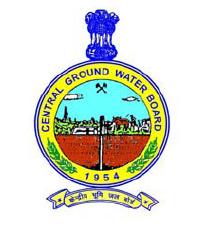/regions/political
Political
Villages in north Bihar sinking in Bagmati's sand - Entire flood control planning needs thorough review - Article by Dinesh Kumar Mishra in d-sector.org
Posted on 16 Jun, 2011 03:56 PM The Bagmati Embankment separating riverside on the left and countryside of the right near Ibrahimpur – Electric poles suggest the height of the embankment
The Bagmati Embankment separating riverside on the left and countryside of the right near Ibrahimpur – Electric poles suggest the height of the embankment
One often hears about the civilizations buried under earth and attributes various reasons for such disappearance of life from a particular place. Excavations reveal the way of life the people might have had before they chose to leave their villages and towns and allowed the nature to take its own course. These accounts are available in books and we all believe the process told to us by historians and archaeologists. These are all conjectures that are revealed by scientific investigations but how many of us have seen, not read, how the civilizations get buried under the debris created by nature? There are places in Bihar where one can see the process of disappearance of civilization and the villages getting buried under the sediments brought by rivers.
Nominations invited for Times of India 'Social Impact Awards' in livelihood
Posted on 16 Jun, 2011 01:42 PMThe Times of India Social Impact Awards in partnership with J.P.Morgan is a platform wherein applications and nominations for Awards can be made by NGO’s, corporates and government organizations under five categories (Health, Education, Environment, Livelihood, and Empowerment & Advocacy).
Pravah calls for SMILE internship 2011
Posted on 15 Jun, 2011 05:45 PM Pravah is an organization based in New Delhi that works with young people to impact issues of social justice through youth citizenship action.
Pravah is an organization based in New Delhi that works with young people to impact issues of social justice through youth citizenship action.
SMILE internship gives you an opportunity to explore your self as you experience life in a community, learn about the joys and struggles of the people, discover the treads that bind you and them, and understand your society better.
Nominations invited for Times of India 'Social Impact Awards' on environment
Posted on 15 Jun, 2011 05:31 PMThe Times of India Social Impact Awards in partnership with J.P.Morgan is a platform wherein applications and nominations for Awards can be made by NGO’s, corporates and government organizations under five categories (Health, Education, Environment, Livelihood, and Empowerment & Advocacy).
Multi-district assessment of water safety (M-DAWS) in Gujarat - A study by Water and Sanitation Management Organisation
Posted on 15 Jun, 2011 12:08 PMThis report by the Water and Sanitation Management Organisation (WASMO) is based on the analysis of Multi-District Assessment of Water Safety (M-DAWS) carried out in 8 districts of Gujarat (Vadodara,Valsad, Mehsana, Gandhinagar, Kachchh, Surat, Ahmedabad and Dangs) , where ensuring adequate and safe drinking water to the people has been looked upon as a huge challenge needing urgent action during years 2007 and 2008 .
The Multi-District Assessment of Water Safety (M-DAWS) programme was undertaken by Water and Sanitation Management Organisation (WASMO) with financial and technical support from UNICEF.
Indian Youth Climate Network is looking for ten positions in its Organisation Development Unit
Posted on 15 Jun, 2011 12:03 PM
The Indian Youth Climate Network (IYCN) is a network of young people in 18 states who are concerned about climate change & environment issues. The purpose of IYCN is to bring the voice of Indian youth on the global platform as South Asia is one of the most vulnerable regions affected by potentially catastrophic climate change & environment issues.
CGWB intends to create a directory and invites bio-data of ground water professionals - Apply by 11th August, 2011
Posted on 15 Jun, 2011 10:40 AM Central Ground Water Board (CGWB) intends to create a directory of ground water professionals and invites bio data of experienced ground water professional (Individuals/Institutions/Scientists/Engineers/NGOs/VOs etc.) working in the field related to ground water/ rain water harvesting/ water conservation/ ground water recharge/ ground water quality/ water well drilling & construction etc.
Central Ground Water Board (CGWB) intends to create a directory of ground water professionals and invites bio data of experienced ground water professional (Individuals/Institutions/Scientists/Engineers/NGOs/VOs etc.) working in the field related to ground water/ rain water harvesting/ water conservation/ ground water recharge/ ground water quality/ water well drilling & construction etc.
Of soils, subsidies and survival - A report on living soils by Greenpeace India
Posted on 15 Jun, 2011 09:54 AMSoil is one of the basic natural resources that supports life on Earth. It is an ecosystem, which is a home to several living organisms, which make the soil alive and give it a good structure and texture.
A living soil ecosystem nurtures and nourishes plants by providing a healthy medium to take roots through a steady supply of nutrients. Use of chemical fertilisers disturbs the natural soil ecosystem and its indiscriminate use has resulted in the degradation of soil. A total neglect of ecological/organic fertilisation by policy makers, extension officers and farmers during the peak Green Revolution period has also added to the soil health crisis.
This report pools together scientific literature as well as farmers’ views on this issues as many a times, while studying issues related to soil health or while making policies related to it, the farmer, who is the most important stakeholder, is seldom consulted. The report has made an effort to rectify this grave inadequacy by including the farmer's perspectives in the academic processes like the social surveys, public hearings and workshops and in this final report. Every section of the report has a component from the existing scientific literature available and another one on the farmers’ opinion on the same area.
Productivity enhancement through up-scaling SRI experiences in Chattisgarh - Brief report of a one-day workshop organised by PRADAN on May 26, 2011
Posted on 14 Jun, 2011 06:11 PMIn May 2008, PRADAN initiated the SRI method of paddy cultivation in selected areas of Chhattisgarh through its partner organisations with financial support from Sir Dorabji Tata Trust (SDTT). It supported 11 NGOs who together could reach 4600 framers in 9 districts of Chhattisgarh in last Kharif.
"Every 30 Minutes": Crushed by debt and neoliberal reforms, Indian farmers commit suicide at a staggering rate - A report by CHR&GJ - NYU School of Law - Interview with Democracy Now
Posted on 14 Jun, 2011 05:46 PMThe crisis has ballooned with economic liberalization that has removed agricultural subsidies and opened Indian agriculture to the global market. Small farmers are often trapped in a cycle of insurmountable debt, leading many to take their lives out of sheer desperation.